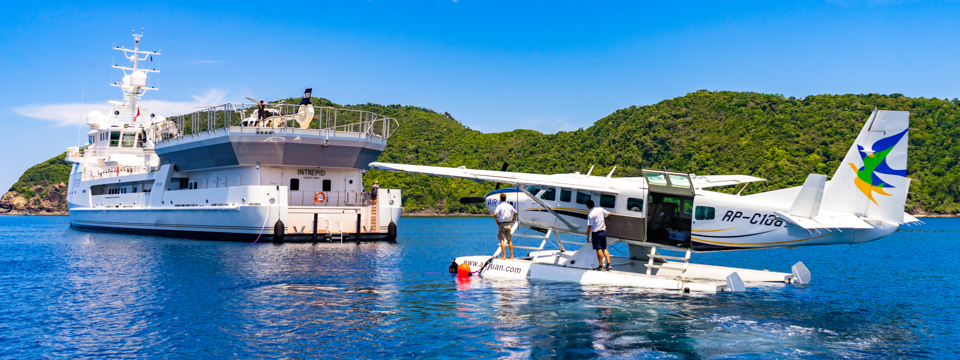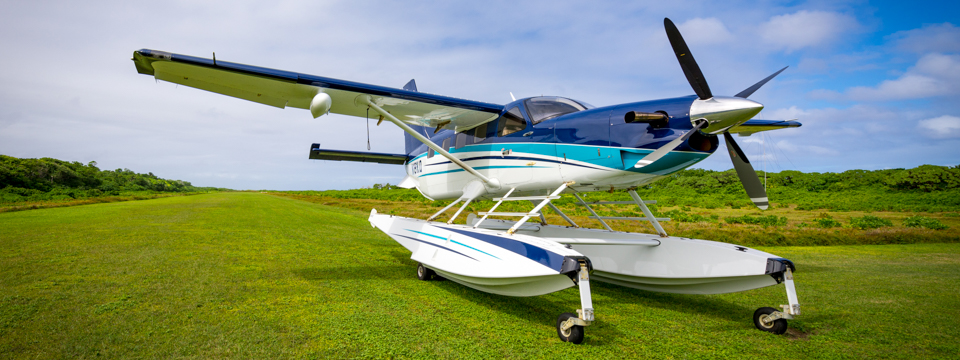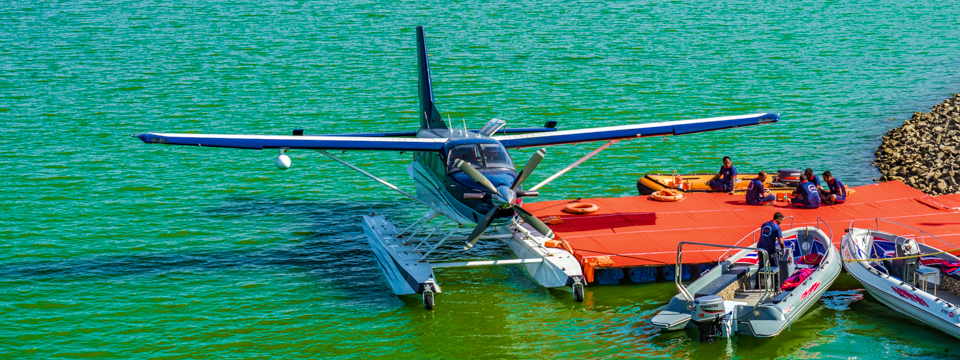Services We Provide
Goulet Aviation Services is thrilled to introduce a comprehensive package designed to enhance the launch of your new amphibious seaplane service. Whether you’re considering integrating a seaplane into your existing land-based fleet or envisioning an entirely new operation, our pre-startup, startup and management services will empower you to visualize and evaluate the feasibility of your dream. Our goal in providing start-up services is to ensure the efficiency and safety of flight or ground operations, thereby reducing costs, providing financial stability, and preventing accidents. This goal is completed in a series of stages, leading to being awarded an AOC and allowing revenue operations to start seamlessly from day one. A seaplane operator must complete all the phases described below to be awarded an Airline Operations Certification and start flying. A client can choose to complete one phase at a time or jump in and complete all phases simultaneously from start to finish.
- Option A allows the client to pull out after any of the phases.
- Option B saves time because several phases can be executed simultaneously.
- Option C is where the client can contract Goulet Aviation Services full-time to either put together a team or work side-by-side with the client’s team.
- If the client is not 100% sure about committing to these options, they can start with a less expensive but professionally completed Feasibility Study.
Maintaining safety margins and reducing risks while 'getting the job done' requires emphasizing safety in the company’s overall planning, decision-making, and resource allocation. One of the best tools for determining the overall ability of any helicopter, aircraft or FBO operator is an independent operational assessment carried out by experts in the field. An Aviation Advisor dedicates many years of hands-on operational expertise and aviation professionalism toward completing this assignment and thereby helping your company to concentrate on the task at hand: producing oil, laying pipelines, mining minerals, or catering to tourists. Once the assessment has been completed, moreover, an Aviation Advisor can help to develop and implement your company's scope of work to ensure you are getting the realistic level of services that your project requires.
Service List
Pre-Start Feasibility Study
- This study uses online information to review operational feasibility, including route planning, historical weather and sea state analysis, to determine the potential for operating a seaplane in a specified area.
- An online marketing and operational review, estimated cost analysis, and financial assessment provide a detailed business case.
- This business case can be comprehensive enough to provide the client or investors with adequate information to proceed with the next phase.
Operational Assessment
Marketing Environment. Assessing the suitability of seaplane markets, including a review of the political, economic, social, technological, and environmental considerations. Meet with potential end users to obtain commitments and LOIs. Operations Environment. Assessing the route structure, landing areas, annual weather challenges and sea state readiness of potential seaplane destinations. Assessing potential locations and costs for developing water aerodromes and bases. Meeting with potential local service providers and partners for costing infrastructure (docks, ramps, jetties, hangars, etc.)- Flight operations requirements, including the type, number and costs of aircraft, flight crew and cabin crew based on standards, qualifications, and scheduling.
- Aircraft Maintenance and Engineering overview, including base locations, routine and advanced maintenance and equipment costs and requirements, crew standards, qualifications, and training.
- Flight and maintenance personnel training based on aircraft type, including initial/recurrent/proficiency training requirements.
- Seaport and Base Facilities and support equipment, including remote facility requirements for passenger transfers.
- Ground operations and facilities include communications, ground handling, ramp procedures, ramp safety, surface conditions, foreign object damage control, aircraft rescue and fire fighting services, fuelling services and quality control practices.
- Dispatch requirements include the number of staff, standards, qualifications, and training.
- Customer Service requirements, including the number of staff, standards, qualifications, and training.
- Marketing plans and programs. Ensuring the marketing team has the right information and training to sell the company’s services realistically and cost-effectively.
- Aviation Security programs for implementing and operating passenger and cargo screening facilities.
- Airport and FBO Facilities—A complete evaluation is carried out to plan and ensure all aircraft operating infrastructure is ready for flight operations.
- Environmental Impact Assessments – This assessment is conducted along with the business plan, but the scale and scope will be determined according to local regulations and requirements.
- The operational assessment becomes the basis for the Financial Business Plan and the Operational Entry-to-Service Plan, determining the CAA’s AOC approval.
Aviation Business Plan
Based on the Operational Assessment, this plan includes visits to the host country's operational sites and meetings with the local CAA, providing a comprehensive financial picture of the start-up costs, operational difficulties, and economic expectations. The Aviation Business Plan is the first phase when applying for an Airline Operating Certificate.- One, two and five-year cost analysis and income projections.
- Identify the target market.
- Risks and opportunities.
- Business activities, including assessing the balance between charter and scheduled opportunities.
- Marketing plan.
- Financing.
- Operational plan.
- Plan considers different requirements of:
- Civil Aviation Authorities.
- Investors.
- Aircraft loan and lease companies.
- Bank operational loans.
- Infrastructure and capital costs.
- State and international subsidies and funding.
- Ecological sustainability.
- Clients.
- Executive summary
Financial Modelling – This cost-comparison exercise will show how different strategies will result in different outcomes, helping to decide how and where to start operations. Project Management Plans – PMP strategies enhance planning for large projects and investments.
AOC Application
We will recruit the team required to process the AOC application, including the Managing Director, Director of Flight Operations, Director of Maintenance, Safety and Quality Manager, and Ground Support Manager.- • Pre-requisites are a completed business plan and all the CAA manuals. Part A to D, as well as the SOPs.
- • To provide in-country oversight, we will hire a local representative to aid in completing the CAA manuals and documents for obtaining an AOC. (The representative will usually be a former CAA employee.)
- • We will provide the expertise to ensure that the AOC complies with international seaplane laws and meets all seaplane-specific regulations and requirements. This requires that the team be in the country most of the time. The goal will be to be readily available to answer questions and sort out problems promptly.
Onsite Aviation Management
Entry to Service- Arrange work permits and residences for the expat managers and staff.
- Arrange finances and insurance for purchasing or leasing aircraft.
- Identifying and carrying out pre-buy inspections and acceptance flights.
- Organize ferry flights.
- De-registering new aircraft in the country of manufacturing.
- Registering the new aircraft in the country of operations.
- Hiring engineers, pilots, and staff.
- Implementing the organizational structure, including management safety and financial commitment, policies, controls, programs, internal audit process, communications, flight following, and emergency response plans.
- Training, including ground school classroom lessons, for all staff, including pilots, cabin crew, dispatchers, ramp crew, and customer service.
- Implementing and conducting flight operations, including carrying out the proving flights and ensuring the application of flight operations manuals, standard operating procedures, flight crew and cabin crew standards, qualifications and scheduling, quality of crew and passenger safety briefings, crew check-list usage, minimum equipment list (MEL) following, records adequacy and accuracy of accident, incident and near miss reporting systems and analysis.
- Pilot, cabin crew and ground crew initial operational and safety training, including line training.
- Aircraft Maintenance and Engineering overview including training, management quality control process, maintenance manuals, programs, standards, planning and scheduling, quality controls of stores and spares, ADs, manufacturer modifications, deferred maintenance and MEL compliance, weight and balance controls, and maintenance records.
- Airport and Seaport Safety and Operational Training: ensuring the pilots and ground support crew are familiar with each seaport environment. Making sure that the seaport operates safely and effectively for staff and customers.
- Flight Operational Risk Management: Setting procedures using baseline operational data, operational expertise, and careful assessment of incident and safety reports; carrying out risk assessments to ensure the staff knows all hazards and the consequences.
- Flight Operations Manuals and Standard Operating Procedures. Training pilots and staff to understand the operation’s reality and follow Standard Task Procedures for each step of the day-to-day operation.
- Airworthiness Risk Assessment. Ensure that the maintenance department coordinates efficiently with the flight department to ensure on-time performance and compliance with regulations.
- Ramp employee training and implementation of standard operating procedures.
- Implementing airport and seaport security protocols.
- Dispatcher training and installation of tools and resources for booking, scheduling, and dispatching all flights.
- Customer service training and installation of tools and resources for booking and scheduling customers and receiving customer payments.
Seaplane Expertise Management
Once the AOC has been awarded and entry-to-service completed, our highly experienced team can continue to manage the newly minted seaplane service on a two to five-year contract that will allow the transfer of skills to the host country employees and management.Stand Alone Operational Assessments
capacity including type and number of suitable aircraft resources, applicability of flight operations manuals, standard operating procedures, flight crew and cabin crew standards, qualifications and scheduling, quality of crew and passenger safety briefings, crew check-list usage, minimum equipment list (MEL) following, records adequacy and accuracy of accident, incident and near miss reporting systems and analysis;
and engineering overview including management quality control process, maintenance manuals, programs, standards, planning and scheduling, quality controls of stores and spares, ADs, manufacturer modifications, deferred maintenance and MEL compliance, weight and balance controls, maintenance records;
of personnel including selection standards, initial/recurrent/proficiency training, safety program induction and behavioural based HES safety awareness;
and support equipment including general safety, fire prevention/contingency plans, hanger maintenance, equipment maintenance programs, environmental and workplace safety practices/regulatory compliance;
and facilities including communications, ground handling, ramp procedures, ramp safety, surface conditions, foreign object damage control, aircraft rescue and fire fighting services, fueling services and quality control practices; and
programs including main passenger and cargo facilities, aircraft in-service protection, and remote base “self dispatch” procedures.




